Meet Microcosm: Episode One, Matt Gauck!
Welcome to Meet Microcosm, a new series where we interview members of our Portland, Bloomington, and Kansas staff and let you know who we are and what we’re all about. First up, Portland store employee and all-around awesome zinester and drawer Matt Gauck!
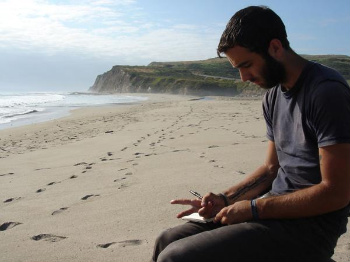
Q: If my mom–who you’ve never met, as far I know–asked you the vague, mom-ish question, “So Matt what sort of stuff do you draw and who do you draw it for?” what would be your answer?
A: To tailor my answer for the “parent crowd,” I’d say I draw and paint a lot of CD covers, t-shirts for bands and various other businesses, and design logos sometimes. The subject matter depends on the organization or band; sometimes it’s very realistic, sometimes it’s simplistic and cute. Very much one or the other. I also tell parents that I
screenprint frequently, which is true, but I feel like it makes me seem more well-rounded, which is the best way to guarantee that parents will like me and offer to pay for my dinner.

Q: You draw a lot of brutal vegan and animal rights stuff, which I really love. If a five-year-old Canadian kid asked you, “Mr. Gauck, why shouldn’t daddy grill steaks for me and mommy and my sister Leigh?” what would you say?
A: Man, a five-year-old? I suppose the easy answer would be to loan this kid a couple Cattle Decapitation CDs, maybe an Abnegation record… but, failing having these things on my person while meeting this kid, I’d go the “simple explanation” route. “Have you ever seen a cow before? Well, they’re very nice animals, and I think being nice to them in return is only fair, right? So, do you think it’s okay to hit them on the head to kill them and then cut them apart? And then EAT them?” Then we’d go visit a slaughterhouse and I think the transformation would be complete. Second stop would be a chicken facility.
Q: One thing I really like about your art is you have a lot of range. The stuff you do for your zine, Next Stop Adventure, varies widely from the stuff you do for bands (e.g. Mesrine) and book covers (e.g. Make a Zine) which varies widely from the paintings, etc. If my bearded 9th grade art teacher Mr. Long (who SUCKED) asked you, “What’s the hardest thing to draw and why?” what would you say?
A: Oh man, great question, especially for a sucky teacher. Well, honestly, the hardest thing for me to draw is any animal that’s mostly fur–like bears, wolves, raccoons, and anything in the dog/cat family. It’s because you can’t just draw the outline and have it look good; you have to draw all the fur which is so difficult to get the texture right. About six years ago I would’ve answered dead trees are hardest to draw, but that’s not true anymore, since I’ve drawn them for the last six years. The easiest thing to draw is old people’s faces, since they have so many wrinkles, it’s simple to “measure” the drawing correctly.
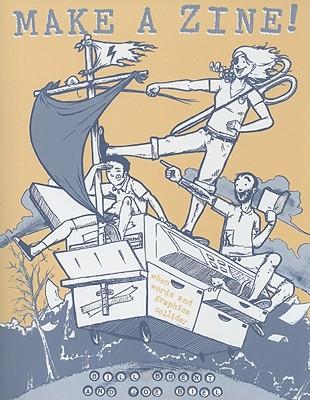
Q: So if an activist kid came into the Microcosm store in Portland where you work and was like, “Dude, I heard you turned down the illo job for those sneaky fucks at the Center for Consumer Freedom, good work. Are there any other kind of jobs, maybe industry-specific jobs, you’d turn down from an ethical standpoint?” what would you say?
A: That’s such a tough situation sometimes, since the sketchiest, most crappy places seem to have the most money, and could pay me enough that I could visit New Zealand or somewhere fun. Nonetheless, I wouldn’t feel comfortable doing anything for any fast food company or any food-industry that sold meat. If I think that my art would help
sell meat or a lifestyle I’m against (alcohol, cigarettes, oil companies) then I wouldn’t do it. However, if some giant band asked me for artwork, and could pay me stupid amounts of money, even if the band sucked, I would do it. Not because I love money or something, but more because it would rule to travel around, buy food instead of
finding most of it, and finally fix my bike, all on some mainstream band’s dime. I guess this is all a theoretical question, though, since I have no idea how McDonald’s or Enron would get my contact info and think “we should hire that guy!”
Q: So if you were doing a panel at the Allied Media Conference this summer and the mediator asked you, “Please tell us a little about your zine… ” what would you say?
A: It’s a super positive bike/travel zine, which I know is well-worn territory, but I still think there’s a couple stories too funny not to tell. I aim for two things–to inspire readers to go on more trips to more places with less planning, and also to make people laugh, since being upbeat and capable of laughing things off is the only way you’ll get through having your bike break down, having a leaky tent, having to drink your pee (issue number 4! not out yet!)…

Word Association! Answer fast!
1. Hot dog – dachshunds!
2. Elephant – stampede!
3. Lazy – the couch
4. Walnut – slingshot! (like, slingshot them at something)
5. Straight-edge – GO!
Q: Finally, if you were doing career day at a high school and one of the kids raised their hand and asked, “So, what do you do for Microcosm?” what would you say?
A: Official title: Box mover. That’s what I do best. Bike delivery guy, box picker-upper, mural painter, invoice emailer, in-store friend maker, and book shelf builder.
Check out more of Matt Gauck’s work at http://www.flickr.com/photos/nextstopadventure or stop by the Portland store and give him a high five.
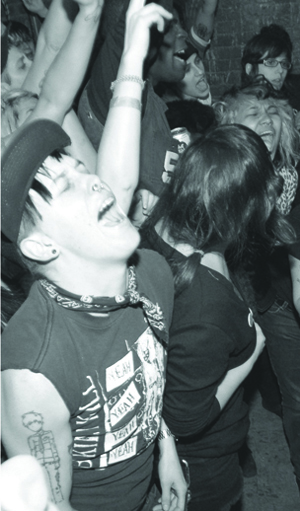 Deadline: May 31st, 2010
Deadline: May 31st, 2010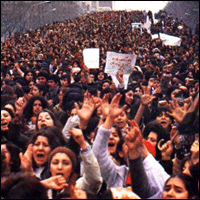 Today is the 99th annual
Today is the 99th annual 
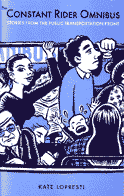
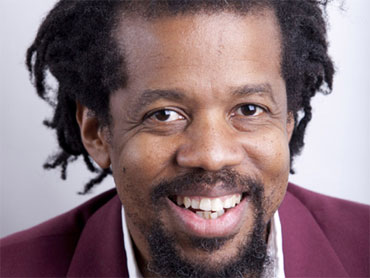 “Are you serious?!” That’s what I said when I first learned what happened to Don. The deep sense of bewilderment and disbelief I felt seemed to be shared by many. It was a tragedy in the true sense of the word.
“Are you serious?!” That’s what I said when I first learned what happened to Don. The deep sense of bewilderment and disbelief I felt seemed to be shared by many. It was a tragedy in the true sense of the word.

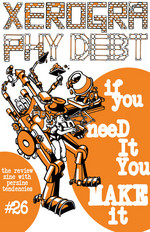
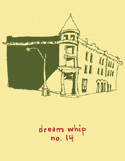 [Recording made by secret tape recorder in the Oval Office]. Nice place, Mr. President! And look at all these couches! Would you mind if I crashed on one tonight? [Inaudible]. Hah. I’m just kidding. Anyway, I know you’re busy, but I wonder if you’d like to check out my zine? [Inaudible]. Well, it’s sort of a book. [Inaudible]. Yes, I wrote it myself. [Inaudible]. Thanks, I try to write neatly. [Inaudible]. It’s mostly about wandering around and getting lost and feeling all the stuff you feel when you’re on the road. [Inaudible]. No, those aren’t kindergarten drawings. [Inaudible]. I drew them. [Inaudible]. Yes, I’m serious. [Tape ends].
[Recording made by secret tape recorder in the Oval Office]. Nice place, Mr. President! And look at all these couches! Would you mind if I crashed on one tonight? [Inaudible]. Hah. I’m just kidding. Anyway, I know you’re busy, but I wonder if you’d like to check out my zine? [Inaudible]. Well, it’s sort of a book. [Inaudible]. Yes, I wrote it myself. [Inaudible]. Thanks, I try to write neatly. [Inaudible]. It’s mostly about wandering around and getting lost and feeling all the stuff you feel when you’re on the road. [Inaudible]. No, those aren’t kindergarten drawings. [Inaudible]. I drew them. [Inaudible]. Yes, I’m serious. [Tape ends].
